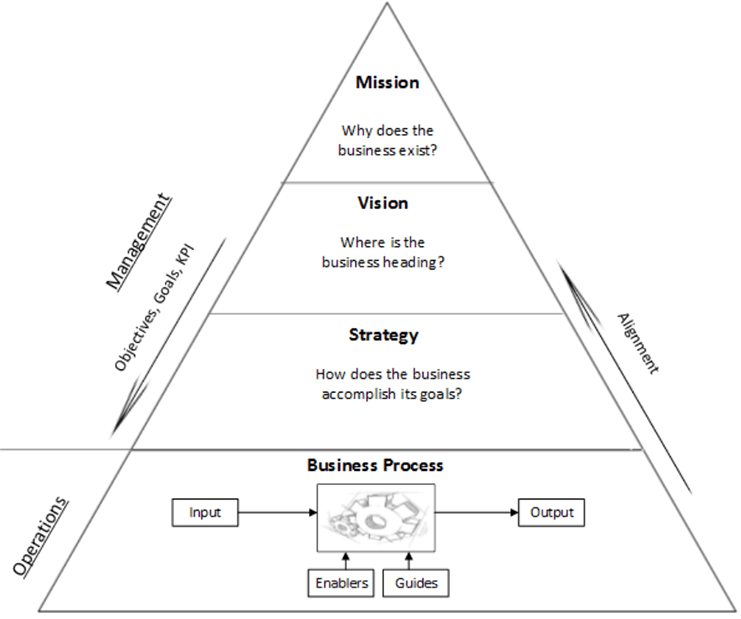From small businesses to large companies, many professionals are looking for ways to make outsourcing successful so that it is easier to achieve higher, more creative objectives. Whether this is done domestically (within the United States) or globally, outsourcing has proven to be a positive force for organizations, allowing for the team to move forward with streamlined processes as well as steady and focused momentum.
However, as with all crucial business decisions, outsourcing business processes that were once originally performed in-house is a big step forward for the company, needing the buy-in of all the relevant contributors and a thorough review of the third party being considered to be brought on to help support the team. It’s important to examine the factors influencing successful outsourcing in order to make the best, most informed decision for the team – and organization – as a whole.

What is Outsourcing?
First, let’s revisit the meaning of outsourcing. Outsourcing is defined as the business practice of having a third party take over and perform the tasks or operations originally done by the company’s in-house team. This does a few things for the company:
- Saves time and money – Outsourcing helps cut down on costs, including overhead. For example, the hourly rate for a junior software engineer may start around $50-80 per hour in the United States. However, this can be much lower in other countries. For example, in the Philippines, the same position can start anywhere between $15-20 per hour. The hiring process also includes the price of recruitment, onboarding, training, benefits, and pay package compensation that drives up the total cost of an employee. When a company chooses to outsource its services to a third party, they eliminate the need to worry about the cost of fringe and can maintain control over the budget, allocating expenses to other areas of the business. Additionally, although there is a legal process in place to ensure that the working relationship is carefully captured in an agreement, the third party’s workforce will essentially be ready to go the moment the agreement receives official signatures. This allows for a quicker turnaround time than onboarding an official employee, who still needs to proceed through required HR formalities.
- Creates focus for the team – With other essential business functions under the control of a third party, the team is given a degree of flexibility that allows them to meet (and often exceed) their assigned tasks. Employees will feel less burdened as they’re not being pulled in multiple directions with less time to focus on their own duties. Having focus drives morale and can simultaneously contribute to a healthy and positive work environment.
- Offers a wider talent pool – Recruiting for a position within the company always has the potential to pull a wide array of candidates, some more qualified than others. However, part of the recruitment means that an organization may be limited to the number of candidates that apply for the position, which can be a frustrating experience for many hiring managers looking to hire relatively quickly but are disappointed with the number of qualified applicants. When a company decides to outsource, this opens up a wider pool of talent (including specialized professionals) not only from the entire country but across the globe. For example, many companies choose to outsource their entire IT department to a third party in order to have this particular service taken completely off their plate. India continues to be the top destination among companies in the United States due to a limited language barrier, relatively young population, a high number of graduates in the computer sciences, lower labor costs, and the competitive edge of being on top of the latest technology trends.
- Streamlines internal processes – Outsourcing is a common practice for companies searching for ways to streamline many of their business processes. This usually is a product of an internal review of what’s been working smoothly and what needs improvement. For example, if the leadership of a call center is aware that the team receives a high volume of calls between the hours of 12 PM-2 PM and is consistently pulled out of essential meetings to attend to these calls, the company will need to evaluate the cost of their employees having to work later to meet their basic objectives for the day. Business process outsourcing enables companies to redirect focus to core functions by offloading specialized tasks to external experts. In this particular case, outsourcing this operation to a third party who offers customer support as one of their main services, may be a decision that the company will have to take into consideration.

- Access to specialized services – Accompanying a wider talent pool means exposure to specialized skills and experience. In fact, a company will be able to find exactly the talent that will best help the team and support the organization as it continues to grow. For example, the most common outsourced services are:
- Accounting
- Bookkeeping
- IT
- Customer Support
- Social Media marketing
- Payroll
- Web Design
- Legal Services
- Healthcare
- Human Resources
- Research & Development
- Engineering
- Data Entry
- Computer Programming
- Content Writing
Because companies usually have a specific need, they can search for a third party that operates solely within that professional arena.
-
Meets the demands of the market – There will be times when a company may need to expand or evolve in order to meet the demands of its particular market. And other times, the need to slow down may also be a possibility. Outsourcing makes both of these processes simpler and faster. For example, if a company needs to focus on more innovative tasks to propel the company’s reputation forward, basic operating procedures that are occupying too much of the employee’s time will need to be diverted to a third party who can seamlessly take over the process, allowing the team to focus on a bigger vision.
- Cultivates cultural competence – Outsourcing to a third party from abroad can create some unexpected benefits such as cultivating cultural competency within the workplace. Working with a service provider with a vastly different culture from one’s own is an enormous learning experience. Often, the two companies learn from each other through experiences and trial-and-error. But in the end, it can increase understanding and awareness of other cultures than our own and help create a diverse workplace environment.

We’ve mentioned that outsourcing can be done domestically or internationally. So while a company considers the possibility of outsourcing work, It’s important to keep in mind that there are three distinct types:
- Offshoring – Outsourcing work to a different, distant country.
- Nearshoring – Outsourcing to a neighboring country often with the company’s own time zone.
- Onshoring – Outsourcing within the company’s own country.
Offshoring and nearshoring have been the most popular choices for a company looking for a way to save on costs, however, all three have both benefits and disadvantages. It just depends on the needs of the business, what kind of service they’re looking to outsource, the designated budget, and their capacity to help with the transition in the beginning stages.
Outsourced freelancing success is entirely dependent on a few key factors. Let’s discuss the things to consider before outsourcing that will help pave the way for expansive growth.

10 Things to Consider Before Outsourcing
There are many determining factors that contribute to successful outsourcing. In order to efficiently streamline processes that benefit the whole organization and truly act as strong pillars of support for everyone involved, here are the top points of consideration when it comes to making the best decision for the business.
- What is the expected level of supervision? – The level of supervision should be kept to a minimum. After all, they are the party assigned to take over the process entirely with minor intervention from the core team. They should be producing considerable results independently and in line with the businesses’ expectations. And unless there are special circumstances that require either the leadership or the team to take over, the operations should be entirely under their umbrella. Of course, in the beginning, there is a learning curve as the new members adjust to their new team and procedures. However, after a designated training period that makes sense given the type of work, the third party should be able to spearhead their new assignment. On the other hand, too much supervision and intervention from the core team defeats the purpose of bringing in another layer of support and could end up being a drain on internal resources and stretch employee capacity further. This is one of the many factors that should be taken into serious consideration as an organization makes a decision about outsourcing.
- Are they trustworthy? – Trust is earned in the workplace, and this is especially true for a third party both domestic and international. Businesses looking to successfully outsource will need to be diligent in their research of the location, their prospective service provider, reviews, and reputation. Word-of-mouth becomes extremely useful when looking into different providers as well. So what can an organization do to help narrow down its options?
- Is their website organized and easy to navigate?
- Do they have a clear infrastructure?
- Can they be easily contacted?
- Is their team showcased on their website?
- Are testimonials available?
- Are they located within a logical time zone and region?
- Do they have any recognizable brands attached to their portfolio?
Until the business has a call with their prospective third-party service provider, these are small ways in which the organization can proactively perform an assessment and establish a type of trust in the beginning stages.

- Is there a clear point of contact? – Another factor that contributes to successful outsourcing is having a clear leader/point of contact if any issues (or questions and updates) were to come up. It’s important that the organization understands who is on their team and who leads (or supports) them. If this isn’t clear from the beginning, and the organization of their internal structure seems disjointed, this is a red flag and a glaring sign of disorganization and miscommunication in the future. Service providers with a clear point-of-contact such as a team lead or project manager will help create a process that is simpler for both parties when it comes to communication across teams. This becomes especially important for wide time-zone gaps, multilingual teams, and multiple project deadlines. Collaboration is the key to successful outsourcing and can preemptively stay ahead of misunderstandings in the workplace.
- What is the expected turnaround time on the delivery of work? – While some third-party service providers offer lower rates overall and are simpler to bring aboard, there should also be clear expectations on the delivery of the work and the turnaround time. Collaboration and regular communication with the team lead or project manager is paramount to meeting essential deadlines. If the third-party consistently misses project deadlines, this will create a backlog of work, holding up the process with the team who will be unable to make any further progress until the work is delivered. This is a major decision-making point when considering outsourcing particular business operations. Expectations on the timing of delivery and quality of the work should be discussed beforehand, during the preliminary meetings, and should be solidified in writing. These early meetings should also be a platform to address any questions surrounding the methods for product delivery so that all parties are on the same page.
- How is communication handled between teams? – Effective communication between teams, especially a third-party service provider located in another country, is absolutely vital to successful outsourcing. When offshoring, there are multiple factors to keep in mind including time zone differences, language barriers (if any), and cultural variances that could potentially impede communication. Project managers, or an upper-level manager, should be coordinating these efforts for the best, most streamlined results. Without a central point of contact, communication becomes chaotic and uneven, often producing underwhelming deliverables and missed deadlines. It’s important that expectations on the methods of communication be clear, too.If there are certain channels used to address any questions or provide updates, access to these platforms should be given immediately to avoid any disruption in workflow. Additionally, recurring team meetings should include any relevant members of the third-party service provider so they remain up-to-date on the progress of specific assignments and are able to virtually meet their colleagues. This helps everyone feel more familiar with one another, allowing for relationships to form that can help facilitate easier work interactions. Including the third party in these meetings also fosters a healthy work environment that values everyone’s input.It’s also essential to be clear on working hours, time off, and holidays for both parties, especially if there is a sizable difference in time zones. Both businesses must be upfront with the availability of their respective staff to avoid any miscommunication or bottlenecks. Some offshore businesses are more flexible than others, offering to extend their working hours (or be available for work during their country’s holidays) to meet specific deadlines if needed. Just keep in mind that the hourly rate for the third party could potentially increase if they work during holidays or beyond designated working hours, which is why tight scheduling and coordination between teams is a must.

- Can a business consider more than one service provider? Absolutely. It’s good to have the opportunity to speak to a few freelancers or agencies and learn more about their services and what they have to offer. Looking to outsource business operations is a big decision. And while it can certainly be budget-friendly and reduce overhead costs, it’s important to understand that you’re looking for the best services. If your business is searching for ways to grow and build revenue, then finding the best fit for the business is the number one priority. While the search can sometimes be challenging depending on what you’re looking for, it’s a smart decision to consider a few quotes and find connections with the third party(s) in question.
- Is the third party using the latest tools and technologies? – One of the reasons why businesses choose to outsource is to stay competitive in their industry. To stay ahead of their competitors, outsourcing to a partner who uses the latest tools and technologies is paramount to successful outsourcing. This is especially prevalent in the field of IT but can be applied to a number of professional fields such as Research and Development and Finance. To deliver the promised quality of work, the tools they implement to complete their tasks make a huge impact on the working relationship. During the preliminary meetings, it’s essential to ask these questions:
- What tools will you be using to complete this project?
- Have you worked on similar projects before?
- What kind of companies have you worked with in the past?
- What is your technology stack?
- What does the development process look like on your end so I can get a better idea of how you work?
- What is my role in the project?
- What collaboration tools do you use for a project?
It’s best practice to ask these types of questions before you move forward with a third party.
- Do they provide an SLA (Service Level Agreement) – An SLA is a commitment in writing between a service provider and their client. It clearly outlines the level of service expected from the provider, responsibilities, any significant due dates previously agreed upon, expectations, and penalties (if any) should the work not meet expectations or cannot be achieved. The SLA acts as an extra layer of protection for both parties, making the terms (and the expectations of the partnership) clear. SLA’s can sometimes involve the review of a lawyer, who can ensure that the language is appropriate and air-tight in case of any legal issues down the road. This is another way to ensure outsourcing endeavors are successful, by having an official document in place that fully describes the nature of the work and all relevant information, eliminating ambiguity and confusion.

- What is the cost involved? – There are many costs that go into recruitment and hiring that all managers need to keep in mind:
- The cost of job board posting (and extension fees if the job is posted for a longer period of time)
- Hiring volume (the number of roles needed to be filled)
- Candidate assessment costs (if applicable)
- Internal/external recruiter fees
- Interview costs
- Compensation package
- Benefits/Fringe
- Training
- Space
- Equipment
According to a survey of businesses completed by the Society for Human Resources Management (SHRM), the average cost per hire is approximately $4,000. To make the best outsourcing decision for the business, these costs must be compared to the costs of hiring a third-party service provider. Outsourcing should yield profitable results, not costing just as much, if not more, than work that can be performed in-house. However, quality should not be sacrificed for quantity. When reviewing potential third parties for outsourcing needs, you will need to discover the appropriate balance between getting the quality of services you’re looking for and the overall cost.
- Is the third-party service provider a right fit for the organization’s vision? – The vision for a business is where it sees itself in the future. It keeps in mind the customers they are serving and what they want to achieve in their particular market. It’s about what they want to be known for. While there are many other factors that make true business sense when considering outsourcing to a third party, it’s important to keep in mind that they must be a good fit for the work culture and the mission of the business. They not only need to be able to support the team, but they need to be able to see the vision itself and be motivated to produce the work that gets everyone to this goal.
In Conclusion
There are many factors that influence successful outsourcing. Understanding the business’s essential needs and demands of the market are crucial decision-making points when beginning your outsourcing journey. While one of the biggest reasons is to cut costs, there are a number of non-financial reasons to consider while making the choice to outsource specific operations to a third-party service provider. With diligent research and thorough and pointed initiatory questions, you can create a situation where your business is thriving with the help of successful outsourcing.




















































